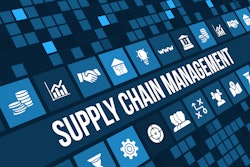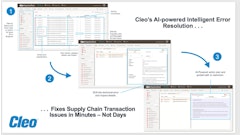
A 2024 Gartner study revealed that supply chain disruptions were regarded as the major risk in achieving procurement success, with 42% of respondents emphasizing this point. Businesses cannot forget the March 2021 incident when the container ship, Ever Given, ran aground in and blocked the Suez Canal for six days. With 400 ships stuck in transit, the cost of delay was pegged at $9.6 billion per day. Without the right tools to provide real-time data and visibility, it was a massive mess of stalled shipments, untracked inventories, and missed opportunities to efficiently reroute deliveries.
Data and analytics are emerging as critical elements of supply chain efficiency to overcome the above challenges. A recent KPMG survey of supply chain professionals revealed that 39% aim to invest in digital and emerging technologies to enhance data synthesis and analysis.
It is in this scenario that AI-enabled data governance plays a significant role. Offering transformative opportunities to build digital and autonomous supply chains, they not only provide a tremendous competitive edge today, but also future-proof supply chains for sustained growth and success.
Why dirty data kills supply chains
Seamlessness, accuracy and consistency of data flow are critical for supply chain efficiency. Building the right data architecture to ingest, process, analyze, store and share clean data across all enterprise systems — with transparency and accessibility — are critical to achieve these outcomes.
Inadequate data architecture creates a messy hairball of legacy systems, fragmented data (across ERP, CRM, logistics, and supplier systems), inconsistent data formats, redundant and duplicate data, and total lack of data lineage. This results in debilitating data silos, misaligned forecasts, failures in compliance, and broken trust between business units and customers. The adverse impact on operational performance is huge, including stockouts (leading to lost sales and revenue) and overstocking (causing losses due to excess inventory).
Traditional data governance methods fall woefully short of what is expected of today’s supply chains, especially with the current dynamic and volatile shifts in markets, and geopolitical and geo-economic conflicts. Not only do they fail to keep pace with the velocity, diversity, and volumes of supply chain data, they are also unable to pivot with agility in the face of sudden and hostile setbacks.
Data governance thus needs to move from reactive clean-ups to proactive trail-blazing. This is what AI-led data governance can achieve for supply chains.
AI — A true force multiplier for data governance
AI helps to create a robust data architecture that can leverage cloud storage, event-driven processing, and standardized data models for supply chains. Data is thus transformed into a strategic asset, where AI-driven insights enable incisive decision-making and operational efficiency at scale. Additionally, AI-led automation provides the combined power of speed, agility and scale across the entire supply chain.
That’s not all. AI-powered data governance can:
- Unfold real-time demand forecasting and inventory optimization, and predict disruptions through automated stock controls.
- Provide end-to-end visibility across the supply chain network to mitigate risks even before they arise.
- Assure data quality with accurate anomaly detection, duplicate resolution, and missing data imputation.
- Auto-tag data origins to ensure transparency of data lineage.
- Automate checks for compliance to regulatory requirements (GDPR, ESG reporting, etc.).
- Streamline the entire logistics and order fulfillment chain.
- Facilitate supplier performance with ML models and automated oversight to ensure contract adherence, quality control, and supplier data consistency.
Embedding AI-driven data governance in supply chains
Covering the gamut of vision, value, risks and adoption, here’s a 5-step AI playbook.
Step 1 — Establish ownership and culture
This calls for changing how everyone in the organization looks at data through focused efforts to raise the level of data literacy across all levels. Data governance must be made cross-functional — across IT, operations, procurement, and compliance. Every stakeholder must be equipped with critical thinking skills so that they ask the right questions, and extract the right data to solve problems in their work.
Step 2 — Build a clean foundation
It is critical to collect, cleanse and enrich the right data into an asset that will continually innovate and improve supply chain performance. AI-powered tools can achieve real-time data aggregation, build automated and intelligent workflows for actionable insights, and continuously enhance lead data quality.
Step 3 — Map lineage and visibility
AI-enabled metadata management can enable data lineage with neural networks (that connect the dots), and natural language processing (for improved interaction with and understanding of data). Additionally, machine learning promotes self-learning in supply chain systems, while deep learning analyzes how users interact with data.
Step 4 — Embed data into decision workflows
AI-powered data governance planning, forecasting, and risk systems (ERP/CRM/analytics) can identify, integrate and effectively mitigate regulatory, reputational and technology risks. For instance, GenAI can prompt scenario simulations and appropriate mitigation strategies on demand for proactive risk mitigation.
Step 5 — Monitor, measure and improve
This is crucial since the data used to train AI models in supply chain systems drives and impacts their behavior and performance. Key performance indicators such as % clean records, time saved, forecasts of accuracy improvements, and error reductions are important to ensure accuracy, security and compliance.
Overcoming barriers in AI-led data governance
Despite its many advantages, one cannot wish away the challenges in implementing AI-driven supply chain data governance. The good news is that they can be successfully addressed.
- Integrating AI into existing supply chain operations can be both expensive and time-consuming in terms of system installation, data integration, and process customization. Comprehensive cost analysis and intelligent staging of transformation can overcome this challenge.
- Complexity in integrating AI into supply chains can be addressed through extensive research, planning and design of AI systems that will align to specific needs and objectives of business.
- Well-designed upskilling and reskilling programs in data analytics, AI system management, and other relevant emerging technologies and skills can remove the apprehensions of job disruptions.
- The all-important challenge of ethical use of AI must be addressed through choice of tools that provide clear and transparent visibility and audit trails into how algorithms derived decisions — apart from human fairness and accountability.
The message is clear — supply chains must be transformed with intelligence and adaptive agility to move ahead of the turbulence curve. AI provides all of this in a game-changing manner. It is not just a technology, but a strategist in shaping supply chains for the years ahead.



















